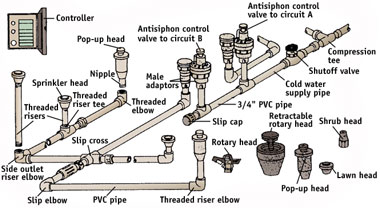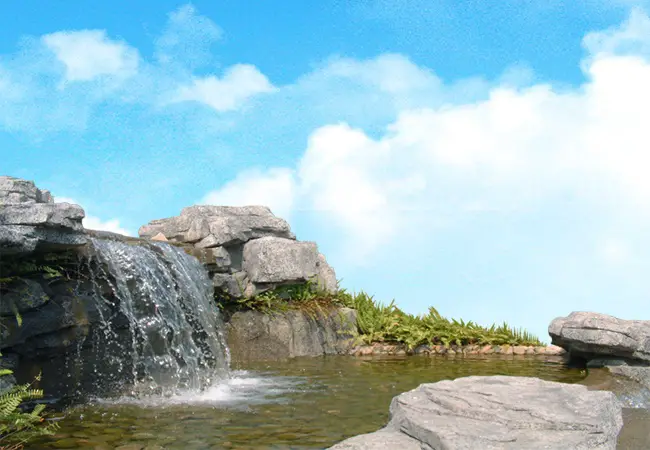Imagine stepping outside on a sunny morning to find your garden lush, green, and thriving — without lifting a finger to water it. That’s the magic of an automatic watering system. Whether you’re a busy homeowner, a business with landscape needs, or simply someone who values efficiency, installing an automatic watering system is more than just a convenience — it’s a smart investment in the long-term health and beauty of your outdoor space.
In today’s fast-paced world, time is precious. Manually watering your garden can be time-consuming, inconsistent, and easy to forget. An automatic watering system takes the guesswork out of the equation, delivering the right amount of water at the right time — every time. It helps conserve water, reduce utility bills, and protect your plants from over- or under-watering. More importantly, it adds value to your property while giving you peace of mind, especially during vacations or dry seasons.
But not all watering systems are created equal. A professionally installed system ensures efficient layout, high-quality components, and optimal performance tailored to your garden’s specific needs. It’s the difference between a cookie-cutter solution and a customized system designed for lasting results.
In this article, we’ll explore why an automatic watering system is a smart investment, what benefits it offers, and why choosing professional installation makes all the difference. If you’re ready to make your gardening smarter, greener, and more effortless — read on. Your plants (and your schedule) will thank you.
1. Why an Automatic Watering System is a Smart Investment
Picture this: Sarah, a busy working mom, loves her home garden. Every evening, she rushed home to water her plants — until one day, a week-long business trip during a heatwave left her garden dry and half-dead. Frustrated, she decided to install an automatic watering system. Fast forward a few months, and her garden is thriving like never before — with no daily effort required.
Sarah’s story isn’t unique. More and more homeowners and property managers are turning to automatic watering systems, not just for convenience, but because they make financial and environmental sense. A well-designed system delivers precise amounts of water directly to the roots, reducing waste and lowering water bills. It also protects your investment in plants, landscaping, and even your property value.
Think of it as putting your garden on autopilot — saving time, conserving water, and ensuring consistent plant health all year round. It’s especially useful in regions with unpredictable rainfall or watering restrictions. Whether you own a small backyard or a large commercial landscape, installing an automatic system is a smart, forward-thinking move.
2. Benefits of Hiring Professionals for Installation
When Mark decided to install an automatic watering system in his backyard, he turned to a few online tutorials and gave it a shot himself. After days of digging, connecting pipes, and testing timers, the result looked promising — until patchy dry spots started appearing in his lawn. Some plants were overwatered, others barely survived. In the end, he had to call a professional to fix the mess — costing him double what a professional installation would have in the first place.
Mark’s experience is a common one. While DIY might seem like a money-saving solution, automatic watering systems require knowledge of water pressure, plant needs, soil types, and system design. Hiring a professional from the start ensures your system is installed correctly, efficiently, and with minimal disruption to your garden.
Professional installers assess your landscape, calculate water zones, and use high-quality components that last longer and perform better. They also know how to program the system for seasonal adjustments, ensuring optimal water use year-round. And if something goes wrong? You have expert support to back you up.
More than just avoiding costly mistakes, professional installation means peace of mind. You can trust that your plants are getting exactly what they need — no more guesswork, no more uneven watering, and no more wasted weekends digging in the dirt.
3. Types of Automatic Watering Systems Available
Not all gardens are the same — and neither are their watering needs. A small balcony with potted herbs, a backyard filled with flowering shrubs, and a large commercial lawn each require different watering strategies. That’s why choosing the right type of automatic watering system is key to keeping your green spaces healthy, vibrant, and hassle-free.
Today’s market offers a wide range of automatic watering systems, each designed to suit specific plant types, soil conditions, and layouts. Some systems are built for precise root-level hydration, while others are perfect for broad area coverage. But with so many choices, how do you know which system is right for you?
Take for example the drip irrigation system — ideal for garden beds, vegetable patches, and individual plants. It delivers water slowly and directly to the roots, reducing waste and promoting healthier growth. For lawns, pop-up sprinkler systems are a popular option, providing even coverage with minimal visibility. Then there are soaker hoses for simple, low-cost watering, and high-tech smart irrigation systems that connect to weather apps and adjust automatically — perfect for tech-savvy homeowners who want total control from their phones.
4. Key Factors to Consider Before Installation
Before you jump into installing an automatic watering system, take a moment to imagine this: you invest in a system, get it installed quickly, and look forward to a lush, healthy garden — only to find uneven watering, waterlogged patches, or even worse, wilting plants. What went wrong?
The answer often lies in the *planning*. Installing an automatic watering system isn’t just about pipes and timers — it’s about understanding your garden’s unique needs and environmental factors before anything goes into the ground.
From the type of soil and plant varieties to your garden’s size, slope, and sun exposure — every detail matters. Water pressure, drainage patterns, and local weather conditions also play a major role in how well the system will perform. Choosing the right system without first assessing these key elements can lead to inefficiency, water waste, and costly adjustments later on.
Do you have a vegetable garden or mostly lawn? Are your plants grouped by similar watering needs? How tech-savvy do you want the system to be — basic timer or full smart control?
By knowing what you need, and with the right preparation and expert guidance, you can ensure your automatic watering system is not only effective, but tailored perfectly to your landscape.
5. Common Mistakes to Avoid with DIY Installations
Installing an automatic watering system might look simple in online tutorials — but in reality, DIY installations often lead to expensive mistakes and disappointing results. Many eager homeowners jump in without fully understanding the complexity involved, and end up wasting more water, time, and money than they ever expected.
One common mistake is poor system layout. Without professional planning, DIYers often place sprinklers too close or too far apart, causing uneven watering. Some areas become waterlogged while others stay bone dry — and your plants suffer the consequences.
Another major issue is ignoring water pressure. Too high, and pipes can burst; too low, and your system may not even run properly. Most DIY kits don’t come with proper pressure regulators or zone planning, leading to system inefficiency and high utility bills.
Improper installation depth is another trap. Pipes laid too shallow can be damaged by foot traffic or gardening tools. Worse, exposed pipes can degrade quickly under sun exposure.
And let’s not forget wrong timer settings — watering during the hottest part of the day can lead to high evaporation loss, while watering too long promotes root rot.
What many don’t realize is that professional installers are trained to avoid all of these problems. They evaluate your landscape, soil, plant types, and even local weather patterns before designing a system.
Learning from these common DIY mistakes will help you appreciate the true value of hiring a pro — because when it comes to irrigation, getting it *right* the first time is everything.
6. Maintenance Tips for Your Automatic Watering System
Once your automatic watering system is up and running, it’s easy to forget about it — until plants start wilting or water bills suddenly spike. Like any smart system, regular maintenance is the secret to keeping it working efficiently and extending its lifespan.
Start with seasonal check-ups. At the beginning of each season, inspect the system for clogged nozzles, leaky pipes, and damaged sprinkler heads. Dirt, debris, and insects can block water flow and cause uneven watering.
Check water pressure regularly. Fluctuations can damage components or reduce performance. A pressure regulator can help maintain a steady, ideal flow.
Clean filters and nozzles. Especially in drip irrigation systems, these small parts can easily clog. A quick flush every few weeks ensures your plants get the water they need.
Adjust the schedule as needed. Plants don’t need the same amount of water all year. Use timers or smart controllers to reduce watering during rainy periods and increase during dry spells.
Winterize your system if you live in colder regions. Drain pipes and store removable parts to prevent freezing damage.
By following these simple yet effective tips, your system will stay in top condition — saving water, protecting your plants, and giving you peace of mind season after season.
7. Eco-Friendly Advantages of Automated Watering
When it comes to sustainability, every drop counts. That’s where automated watering systems truly shine, offering a wealth of eco-friendly benefits that go beyond just keeping your plants healthy. By investing in a smart irrigation system, you’re not only saving time — you’re also making a positive impact on the environment.
Water conservation is the standout advantage. Automated systems deliver precise amounts of water directly to your plants’ roots, reducing the risk of overwatering and water waste. Traditional sprinklers often waste water through runoff or evaporation, especially when used during the day’s hottest hours. With smart controllers, your system adjusts based on real-time weather data, ensuring your garden gets exactly what it needs, when it needs it.
Reduced energy usage is another eco-benefit. Automated systems can be programmed to run efficiently, ensuring that they use only the energy required for optimal performance. This minimizes unnecessary pumping and overall energy consumption.
Lastly, healthier plants thrive in controlled conditions. Overwatering or underwatering can stress plants and require more chemicals to maintain their health. Automated systems maintain consistent hydration, encouraging stronger, more resilient gardens with fewer pests and diseases.
By choosing automated watering, you’re embracing an eco-conscious way to enjoy a beautiful, thriving garden without compromising on sustainability.
In conclusion, investing in a professional automatic watering system offers numerous benefits, from saving time and money to promoting a healthier, eco-friendly garden.
Whether you’re protecting your plants from the risks of overwatering or reducing your water bills, a well-designed system ensures efficiency and consistency. Hiring professionals guarantees proper installation, avoiding common mistakes and ensuring optimal performance.
With regular maintenance, your system will continue to thrive, contributing to a sustainable and flourishing outdoor space. Ultimately, an automatic watering system is a smart, long-term solution that enhances your garden while making your life easier.
Read also: Greenhouse Watering System – How To Choose The Best One?
Basic Steps for Garden Watering System Installation
If you wish to install your own garden watering system but do not really know how to do it, then you can refer to the following basic steps to help you out.

1. Before implementing your garden watering system, firstly, you need to figure out the area and drip depot of your garden that you want to get irritating. You need to know whether your garden is a farm, home garden, or backyard garden?
2. Determine the plants and flowers in your garden. Are there trees within your garden? Is the garden stuffed with shrubs and bushes? You will need to determine what plants need to be watered before installing the garden watering system because different plants have different irrigating needs.
3. Buy the necessary materials for making the garden watering system. You may visit your nearby hardware and gardening store, spend some time seeking advice from an expert and experienced professional to get the appropriate materials that you need to set up your irrigation or garden watering system.
4. Draw up a design and layout, then study meticulously where the spot is for you to put the water pipes and plumbing. Find out the location and drip depot where the clean water will come from. If you can dig a well, you should do so as a well will supply sufficient water for the garden. Besides, a well can help to save you plenty of money.
5. Begin the process of building your garden watering system. Follow exactly where your design and layout to implement and joint all the necessary items.
6. Make a thorough check on the connections, watering pipes, sprinklers, valves, plumbing, etc. You need to ensure that all joints are not getting breaks and leaks.
Read for more:

